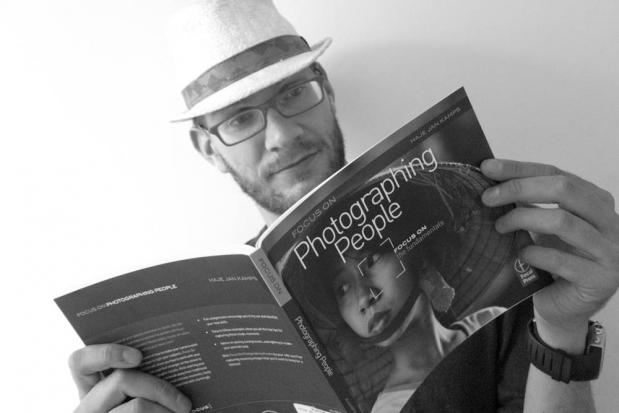
Who even reads books anymore, anyway? Oh, wait - I do. And I write them, too!
Cameras are digital. Developing is digital. The internet is digital. Surely, we’ve moved on beyond a world where we have to look at books for our photographic enjoyment, improvement, and development? Well, you’d be right in one way, of course: You can find nearly everything you might want to look at / learn about on-line.
And yet, there’s something unique about photography which makes books all that more enjoyable. For one thing, I believe the vastly higher resolution of a well-printed photography book is a more natural way of looking at photography.
Best of all? Books don’t have to be expensive. You can buy ‘em for cheap via the internet (type in the ISBN number into a search engine), you can buy them second-hand via the Internet (Amazon has a huge second-hand market of used books, and eBay ain’t bad neither), you can mooch them for free via sites like BookMooch, or you can head to your local library (you do have a library card, don’t you?), and check ‘em out for free.
Of course, I’m slightly biased – I make my living writing books – but I do think that you could do a lot worse than study what others have done in the past. If Twitter is anything to go by (I’m never quite sure if the assorted Twitter masses are a good or a bad hivemind – but if nothing else, it’s a very enthusiastic one), then books are definitely not dead – I did three recent tweets (1, 2, 3), which easily generated the most response I’ve ever had to anything I’ve babbled on about in my twitter feed – ever.
Maybe books aren’t the death of trees, but the birth of knowledge… And here are some of the books people are most passionate about…
Finding these books on sale: I’ve added links to Amazon.com and Amazon UK behind all the listed books. These are affiliate links, so if you end up buying one of the books, I get a kickback. If you’re outside the US or UK (which I know many of you are), the Amazon pages generally have an ISBN number on it – enter it into your favourite book shop, and you can see if it is available locally. Failing that, your local bookshop might be able to order it in for you if you give them the ISBN number .
Classics

Ansel Adams at 100, to me, is a stern reminder that someone was taking better photos than me 100 years ago.
Ansel Adams at 100 (US / UK) by Ansel Adams.The book marks the 100th anniversary of Ansel Adams and pays tribute to one of the most talented American landscape photographers whose portrayal of nature remains unsurpassable to this day Suggested by @Freeale
History of Photography by Josef Maria Eder (Amazon US / UK) offers comprehensive coverage on a collection of articles and rare photographs by pioneers in photography and contains materials for research into the history, technology and aesthetics of the medium. Suggested by @Wigwam
Lighting for Photography (Amazon US / Amazon UK) is is a classic book describing how Walter Nurnberg does a phenomenal job of using film studio lighting techniques in order to transform industrial photography after World War II. Suggested by @Wigwam
The Camera (US / UK) is one of Ansel Adams’s iconic technical books on photography, writted with the goal of teaching photographers the artistry of harnessing a camera to its fullest artistic potential. Suggested by @mrlizzard
The Negative (US / UK) by Ansel Adams is the second volume in Adams’ vital and celebrated series of technical books on photography, is geared towards enthusiastic photographers on how to use film and the film development process creatively. Suggested by @mrlizzard
The Print (US / UK) is the final book in Adams’ series of books on photographic techniques, deals with every possible detail like designing and furnishing a darkroom, advanced techniques like toning, bleaching, burning and dodging. Suggested by @mrlizzard
Practical Guides / text books

One of the biggest challenges as a photographer is to develop a photographic 'style' and 'language'. This book shows how one photographer pulled it off.
Within the Frame: The Journey of Photographic Vision (US / UK) by David CuChemin serves as a trip down the memory lane, the author creates vivid images of exotic destinations he visited to inspire photographers to express their vision through passionate and compelling photography. (on Twitter as @pixelatedimage). Suggested by @scuba_suzy
The Digital Photography Book (US / UK) by Scott Kelby is the ultimate resource in digital photography, this immensely popular book teaches the professionals and the amateurs the techniques of making any photo look more professional, sharper, clearer and dramatically gorgeous. Suggested by @bimal_tailor
The Photographer’s Eye: Composition and Design for Better Digital Photos (US / UK) by Michael Freeman uses real life examples from photographic assignments. The book combines traditional techniques with the latest technological trends to educate photographers to explore the hidden potentials in shooting dynamic digital photographs. Suggested by @jkremers and @BBluesman
PhotoJojo: The Book (US / UK) by (@SuperAmit on Twitter) his merry band of pirates. With crystal clear DIY instructions, the book discusses how creativity, simple crafting skills and imagination can go a long way into transforming simple, plain photos into vibrant works of art. Suggested by @HeatherGill
Photoshop LAB Color: The Canyon Conundrum and Other Adventures in the Most Powerful Colorspace (US / UK) by Dan Margulis elaborates on the immense potential of Photoshop. The book reveals the simple, subtle tools and techniques to use, which can make plain images come to life, and is written in a way that is approachable by “real people”. Suggested by @rpajuaba
The Complete Guide to Digitally Lighting, Photographing, and Retouching Faces and Bodies (US / UK). Lee Varis is a master in his craft and widely acclaimed photographer. He provides step by step instructions on how to achieve accurate skin tones in men and women using digital photography in and outside the studio. Suggested by @rpajuaba

Getting exposure right is easily the most important part of photography - and yet, it's something many people are struggling with. Read this book, and struggle nevermore.
Understanding Exposure (US / UK) is easy to read and a great, straight-forward introduction to the dark art of getting the exposure on your photos right once and for all. The book, aided with plenty of illustrations offers the basics of aperture, lighting and shutter speed, photography’s basic triumvirate, to beginning and intermediate photographers.
The Moment it Clicks (US / UK) is a book about the 30 years of Joe McNally’s photographic career, some of the images he has created and stories behind the images and the lessons learned from life experiences. Suggested by @ssphillips
Coming into Focus: A Step-by-Step Guide to Alternative Photographic Printing Processes (US / UK) by John Barnier is geared towards educating amateur and professional photographers about the non-traditional processes of photography that can serve as alternatives to standard methods. Transforming seemingly obsolete processes to life like magic, Barnier has a gift of making processes exciting and interesting. Suggested by @ louislucci_com
Photography (US / UK) by Barbara London, Jim Stone and John Upton is a fundamental book written mainly for students. It provides comprehensive coverage on color, black and white, digital and all around background on photography by means of illustrations and examples. Suggested by @louislucci_com
The Art of Bird Photography (US / UK). Famous bird photographer Arthur Morris shares some of his hard-won experience, explains various techniques for getting great photographs of birds. Most of it is pitched at a level suitable for amateurs. Suggested by @davidbrennphoto
Light In The Landscape (US / UK) by Peter Watson is an awe-inspiring book for photographers specialising in landscape photography, that describes the brilliant techniques used to capture some of the most captivating images of landscape by the world famous photographer. Suggested by @Frankkster
Reefs Revealed (US / UK). Armed with expertise on reel life, coupled with immense knowledge on natural-light filter-photography, Alex Mustard presents the importance of saving nature’s invaluable treasures to protect the future of our planet. Suggested by @scuba_suzy
A Diver’s Guide to Underwater Photography (US / UK). The beauty of underwater photography in its entire splendor has been unraveled in this book. A & A Ferrari share a wealth of information on techniques and equipment to use – and show off some incredible results. Suggested by @scuba_suzy

Okay, so I might be a teensy bit biased (I did write the damn thing, after all), but I happen to think this is one of the best books for people who are keen to get into macro / up-close photography!
Water Light Time (US / UK). Combining his love for underwater life and expertise in photography, David Doubilet does a phenomenal job of putting together stunning and breathtaking images of life that abounds under the sea. Suggested by @scuba_suzy
The Underwater Photographer: Digital and Traditional Techniques (US / UK) by Martin Edge is for intermediate level photographers who have a passion for under-water photography – a must-read. Valuable techniques have been laid down methodically for execution of outstanding results. Suggested by @scuba_suzy
Macro Photograpy Workshop (US / UK) by Haje Jan Kamps serves as a learning experience for amateur people who will explore, experiment and discover the innumerable possibilities a camera has to offer in terms of its functionality once you get close enough… Suggested by @Photocritic ;)
Business guides
VisionMongers: Making a Life and a Living in Photography (US / UK) by David DuChemin is an engaging fusion of the basic techniques of photography with commerce – and shows how a good sense of business can lead to a very rewarding and successful career in photography; the author shares his vision and offers a wealth of advice, tips, and tricks. Suggested by @prairielight
Best Business practices for Photographers (US / UK). A true entrepreneur in this field, John Harrington sheds light on methodologies and formalities that you need to keep in mind, should you desire to carve out a successful and rewarding career-path in photography. Suggested by @brianlarter
Art books
The Life of a Photograph (US / UK) by Sam Abell features exquisite images that can be captured only in our wildest imaginations, takes us on a journey of Abell’s work – A book witnessing how he pours his whole heart into his photographic endeavours. Suggested by @allisterfreeman
Beneath The Roses (US / UK) Renowned for his artistry, Gregory Crewdson’s works seem less like photographs, and more like moments captured from epic movies, seemingly dark and troubling, with a definitive sci-fi twist in them. Suggested by @MilesStorey
American Music (US / UK) by Annie Leibovitz’s is a well-curated collection of portraits of a wide range of musical Americana: nearly a century of musical creativity, condensed into a fantastic book. Suggested by @SvanBaaijen

The original full-size, full-cost version of Helmut Newton's Sumo cost nearly $20,000 - luckily, there's a more accessible version out there these days.
The Art of God (US / UK) by Ric Ergenbright might well be the most visually appealing book of its kind, this nature photography book artfully presents text matching each photo and combines to make the “heart leap and the soul rejoice”. Suggested by @Frankkster
Visual Poetry (US / UK) by Chris Orwig is an awe-inspiring book that can encourage people from any walk of life to use their passion and creativity to transform digital images to splendid works of art using natural light. Suggested by @MDDunnPhoto and @tabby2004
Come Again (US / UK) is a collection of photographs from Beirut taken by Robert Frank took after being commissioned to capture the aftermath of the Lebanese war – and Polaroids of the city and its environment. Suggested by @dantebusquets
Snaps (US / UK) by Elliot Erwitt is The book is essentially an effort at portraying and capturing Erwitt’s work of 500 images, consisting of a wide range of subjects, ranging from famous personalities to the very ordinary. Suggested by @zenrhino

For many of us, this will be the closest we'll get to a space shuttle - or, indeed, the moon. What a gorgeous way to travel, though!
Full Moon (US / UK) by Michael Light may be the only science photography book dedicated to capture stunning and absolutely breathtaking images of the voyage to the moon and the return to planet earth. Suggested by @brettbeyer
Sumo (US / UK) by Helmut Newton made headlines for its unique and gargantuan dimensions, is back in a more cost effective version (The original cost nearly $20,000). It and covers Newton’s outstanding career from all possible perspectives. Suggested by @maxwellander
Terryworld (US / UK) is about Terry Richardson, an American fashion photographer who took the fashion world by storm. The book also contains 70 new photographs not featured in the original edition. Terry RichardsonSuggested by @joostdeleij
American Prospects (US / UK) by Joel Sternfeld is an exploration of the landscape as reflected on the changing states of American society. The impact of this work continues to resonate through contemporary artistic, photographic practice. Suggested by @shanegodfrey
The valley (US / UK) by Larry Sultan is an exhibition of photographs by the famous artist. It uses home, work and suburbia as the backdrop and looks at the transformation of middle-class suburban homes into stage sets for adult films. Suggested by @shanegodfrey
American Surfaces (US / UK) is a book that depicts the road trips taken by Stephen Shore all across the United States, and uses hundreds of color photographs as the medium of expression. Suggested by @shanegodfrey
The Americans (US / UK) is a monumental work of Swiss-born photographer Robert Frank. The book was first published in the U.S. and dramatically altered how photographers looked through their viewfinders – and the way Americans saw themselves. Suggested by @shanegodfrey
The Photon Detector Section
The lovely @photondetector went a bit mental with his suggestions for books, and provided a significant stream of fantastic ideas. It’d be rude to not give him his own mini section in this guide as a result (and you should follow him, too; he’s got a consistently awesome Twitter feed!)
Self Portrait With Cows Going Home (US / UK) by Sylvia Plachy is a powerful personal memoir about the author’s beginnings in communist Hungary, her emigration to Austria, New York with her parents and her repeated journeys back to Hungary.
Fashion Magazine (US / UK) by Lise Sarfati explores territories of childhood, adolescence and adult womanhood, and seeks to record possible becomings. Explorations of identity are encouraged by the clothing, which is both incidental and essential.
In High Fashion – The Conde Nast Years, 1923-1937 (US / UK) by Edward Steich is an extensive collection of the fashion photographer Steichen who remains unparalleled in his work on Vogue till date. He truly has become an icon of fashion photography.
Art & Fear: Observations On the Perils (and Rewards) of Artmaking (US / UK) is an unmissable book about making art. It draws from personal experience, and provides an incisive view into the world of art as it is experienced by art makers themselves.

If you ever thought the Polaroid camera was a toy, then here's your chance to change your mind... Forever.
The Polaroid Book: Selections from the Polaroid Collections of Photography (US / UK) is an unique selection of 400 works from the Polaroid Collection and is a treasure trove of photography. Barbara Hitchcock provides an engaging essay on the history which underpins it.
Deep South (US / UK) by Sally Mann is a much-anticipated collection of Mann’s exquisite, ethereal landscape photographs, taken in the years since she rose to international fame.
In The Garden (Website) by Beth Dow is filled with photos taken in formal English and Italian gardens, which naturally attract photographers in their offering of glimpses of the rich traditions of garden making.
Suspended In Time (Photondetector’s Review) by Matthew Larkin is a collection of stunning Ambrotypes whose unique photographs are made on black glass. Larkin’s pictures capture arresting moments of individuals engaged in the modern practice of suspension.
Your turn!
Turns out that a lot of people are deeply passionate about photography books – ways to learn, tips to improve, and the ever-evolving landscape of arts books. Did I miss any? If so, leave a comment below – If you write it in the same style as the bits above, I’ll add it to the article, too!








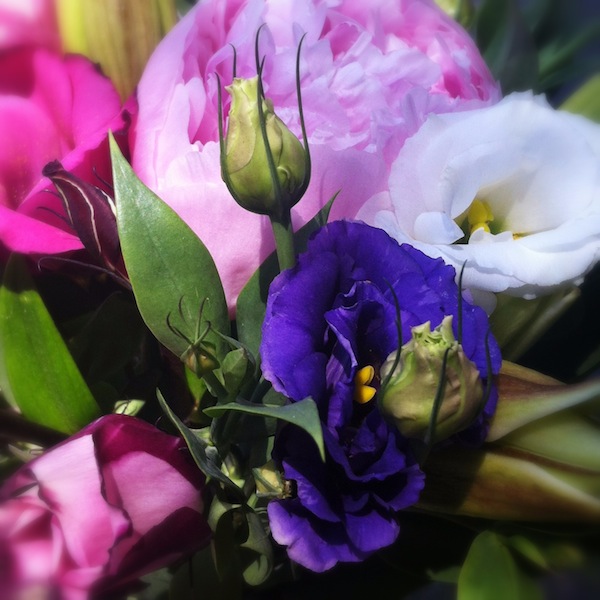
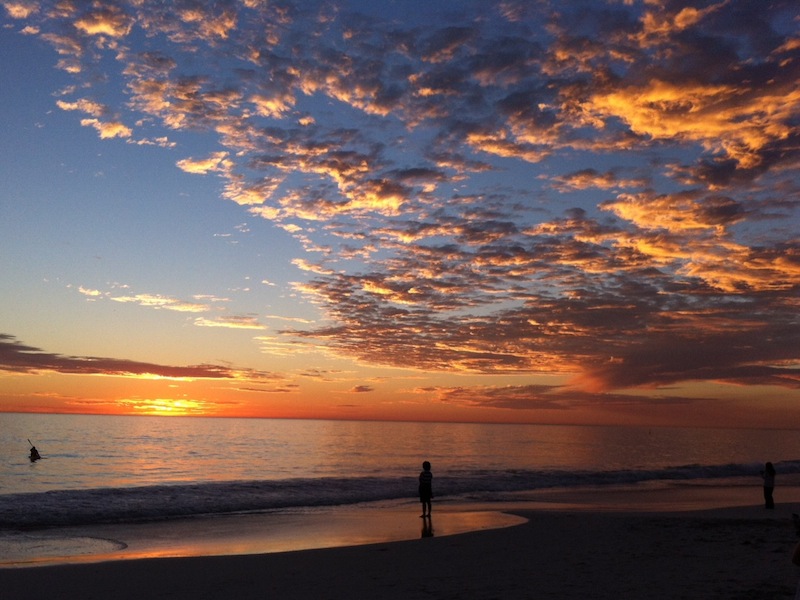
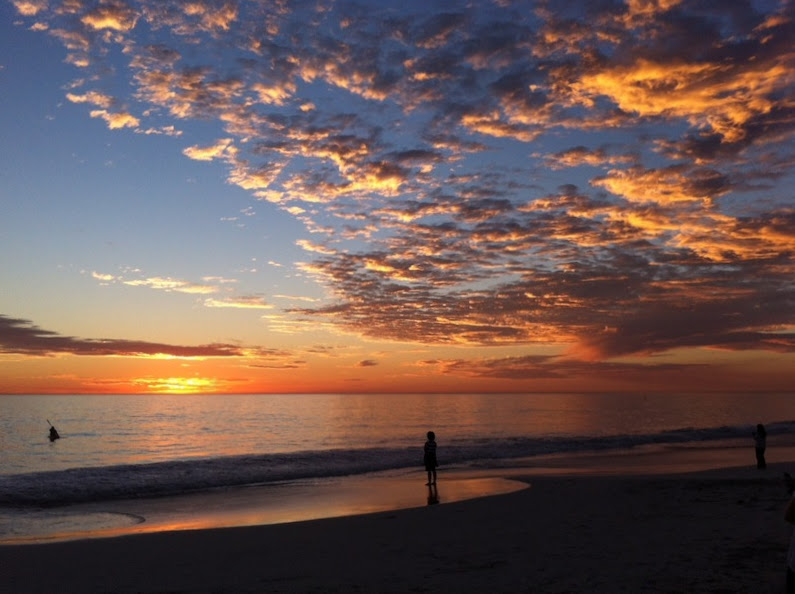




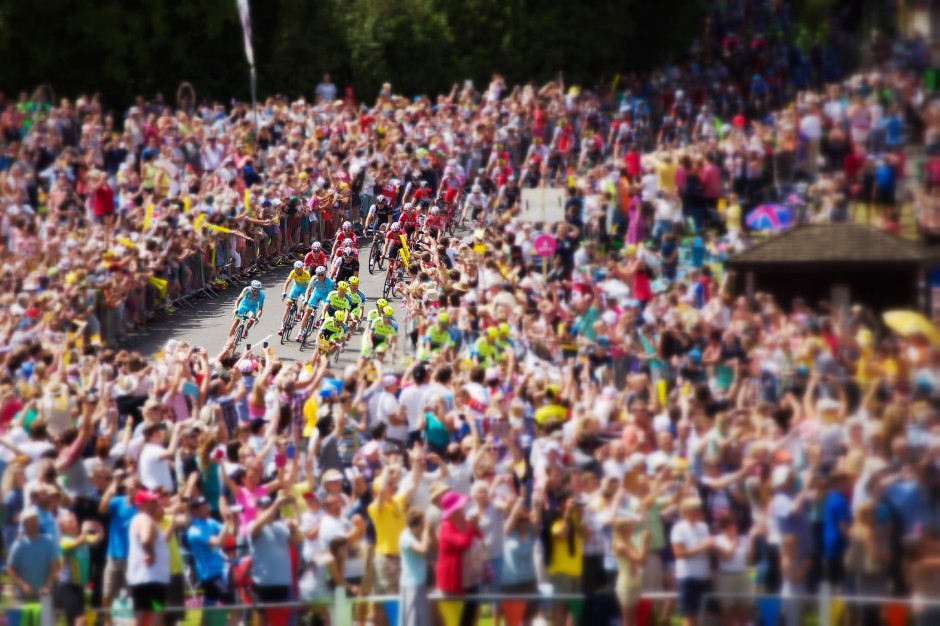

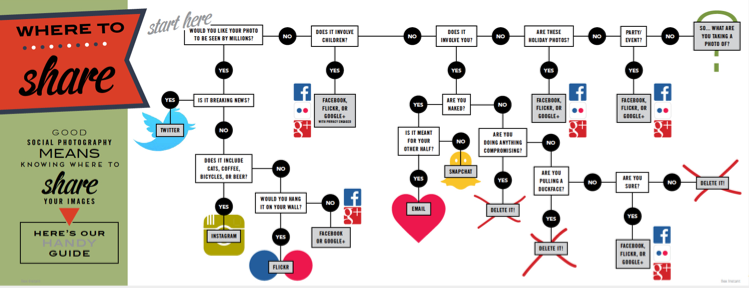
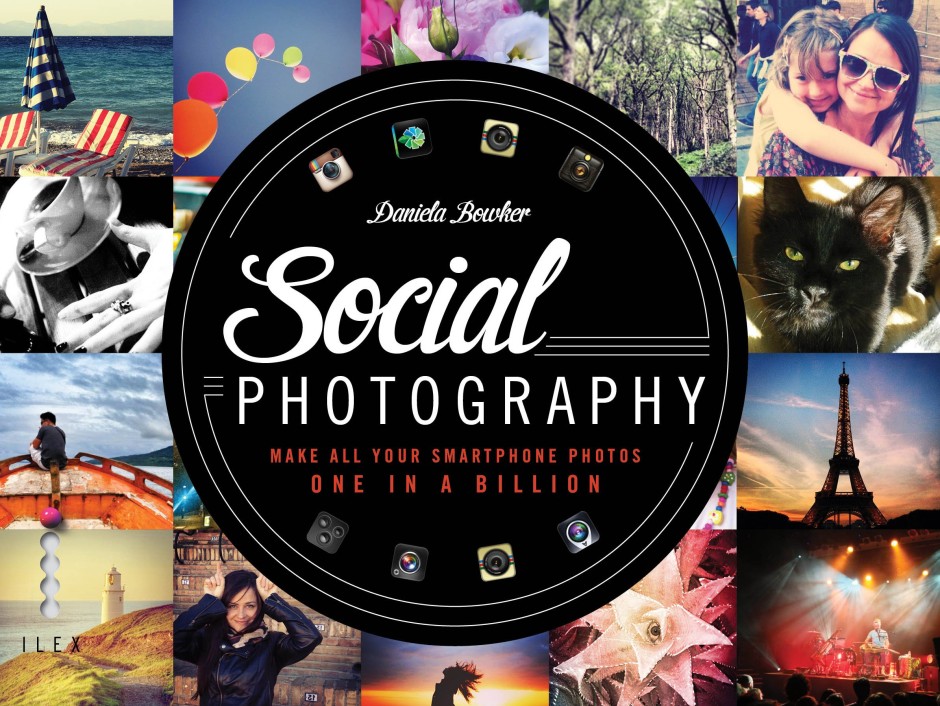
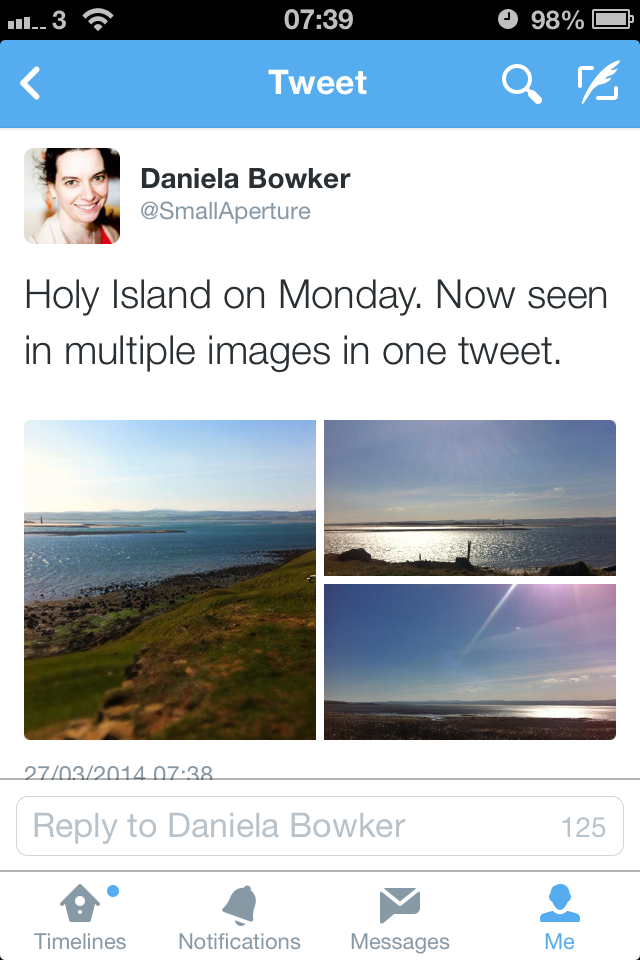

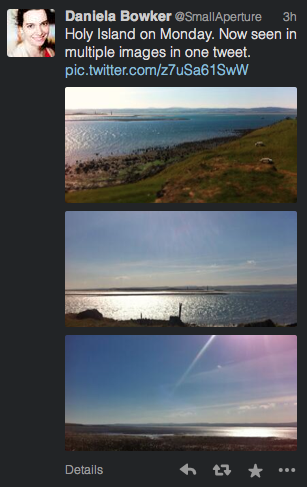

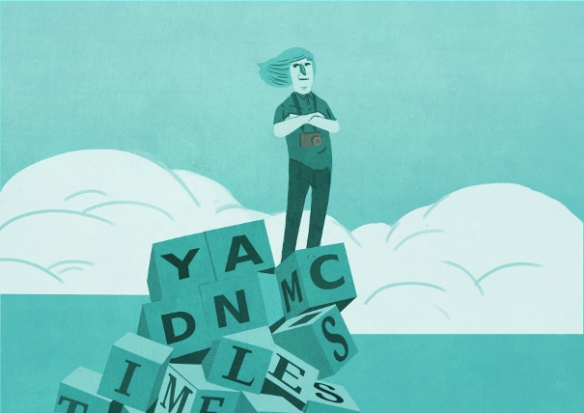

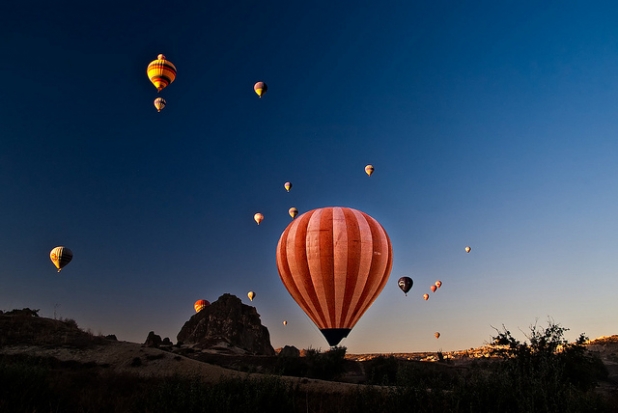








 What is this? - In our NewsFlash section, we share interesting tidbits of news. Think of it as our extended twitter feed: When we find something that get our little hearts racing, we'll share it with you right here! Loving it? Great, we've got
What is this? - In our NewsFlash section, we share interesting tidbits of news. Think of it as our extended twitter feed: When we find something that get our little hearts racing, we'll share it with you right here! Loving it? Great, we've got 